Children deal with many stressors throughout the day, so it’s ideal to create a serene environment to relax in, allowing them a safe haven to study, play, and fall asleep readily.
In order to create a peaceful bedroom for your child, there are several elements you need to take into consideration. Here are some tips on how to make your child’s bedroom environment relaxing and peaceful.
1. Choose a relaxing color, such as blue.
There are many shades and hues of blue. Avoid bright, stimulating, “electric” blues and shades of blue that are very dark (except for trim). Aim for a soft, gentle blue that is reminiscent of an evening sky.
Green works well, too, if it is not too bright, “minty,” or dark. Earthy greens are more relaxing and are almost like a neutral on the walls.
Avoid too many colors. Use various hues and shades of the same color if possible to do trim and doors.
2. Lighting should be reminiscent of daylight during the day and soft and gentle in the evening.
Consider “ambient mood lighting” that can be brightened or dimmed depending on the time of day. Our brains are wired so that bright light stimulates us and dim light relaxes us.
3. Incorporate your child’s personality into the room.
Without making it too “busy,” make your child’s bedroom reflect his or her interests and personality. Put some of his or her artwork on the walls, and any trophies, ribbons, or awards can go in a display case or on a special shelf.
As long as it is not too stimulating (or too hard to undo), you can decorate your child’s bedroom in a theme that reflects his or her interests.
4. De-clutter the bedroom.
This is challenging with kids’ rooms! But it’s important for the peaceful atmosphere. Too much stuff lying around in disorder makes it hard to relax and keeps kids stimulated. Have organized storage bins and closed-front cabinets for the bulk of your child’s belongings.
Open shelves can look cluttered and be stimulating. If open shelves are what you have to work with, put bins and boxes on the shelves and put the toys in those.
5. Have space around your child’s bed.
This is recommended in feng shui, and even if you don’t subscribe to that philosophy, it is still helpful to have space around your child’s bed. It keeps your child from feeling crowded or closed in.
6. Minimize visual stimulation.
There should not be a television, computer, or other visual media going on while your child is trying to sleep. In fact, televisions and computers should not be in your child’s bedroom.
Even if they are off, their presence can be stimulating. Just the temptation to turn them on can be distracting in and of itself.
7. Minimize auditory stimulation as well.
Some children need “white noise” to fall asleep. If so, the sound of a tabletop fountain or bubbling fish tank is more relaxing that other electronic noises. Quiet music promotes a peaceful atmosphere as well.



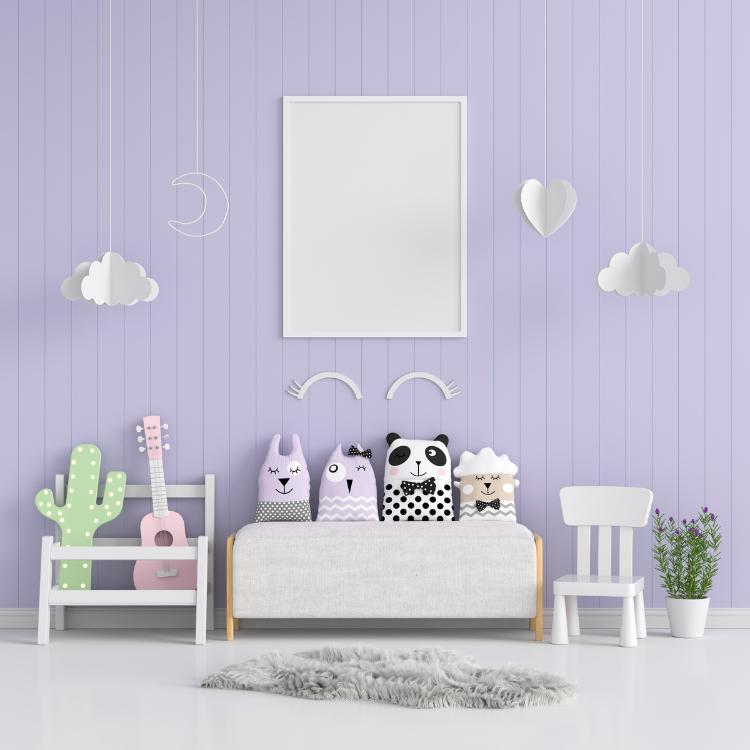
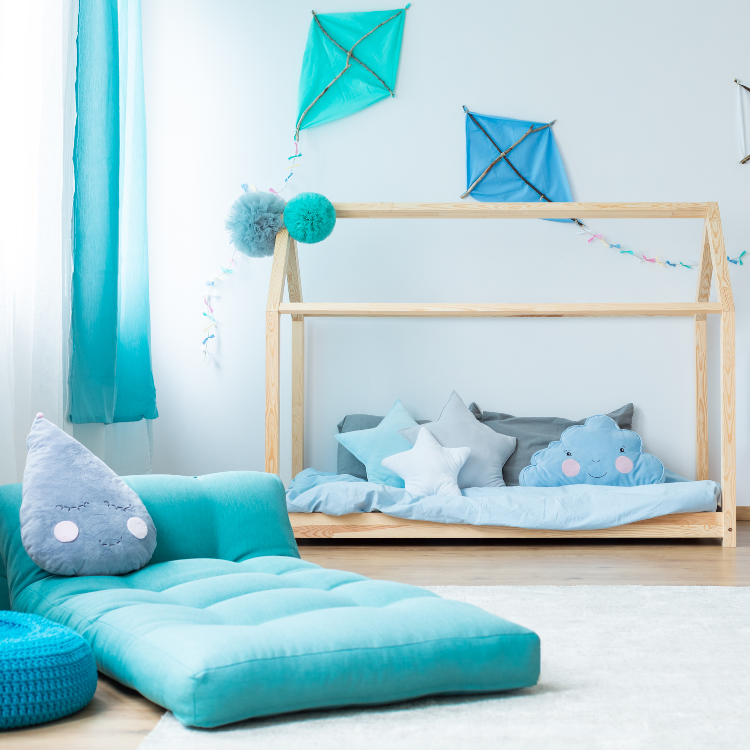
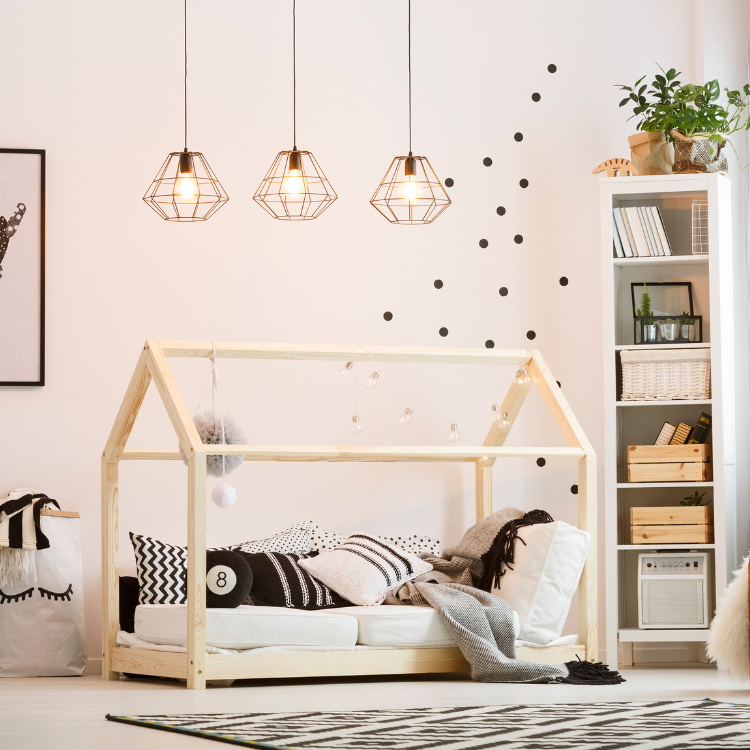
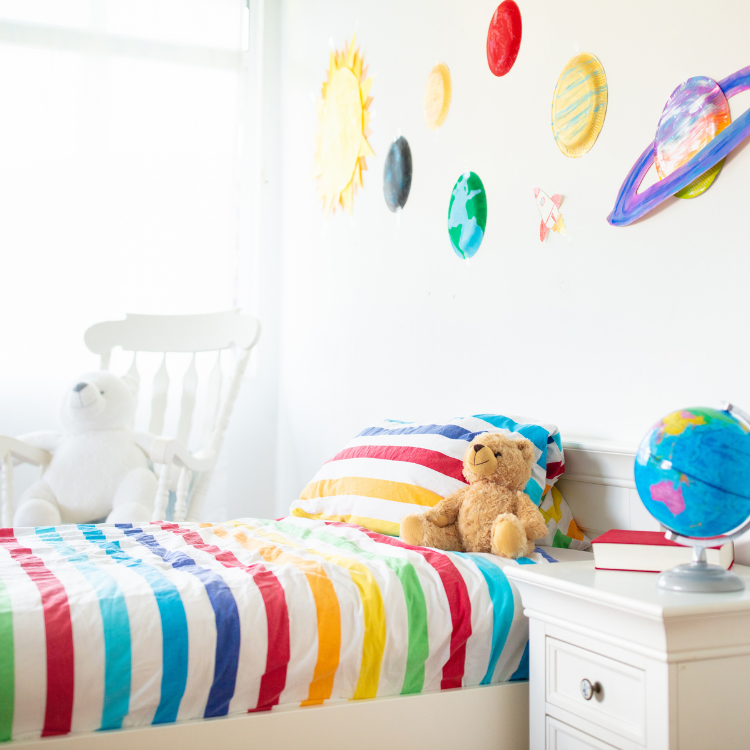
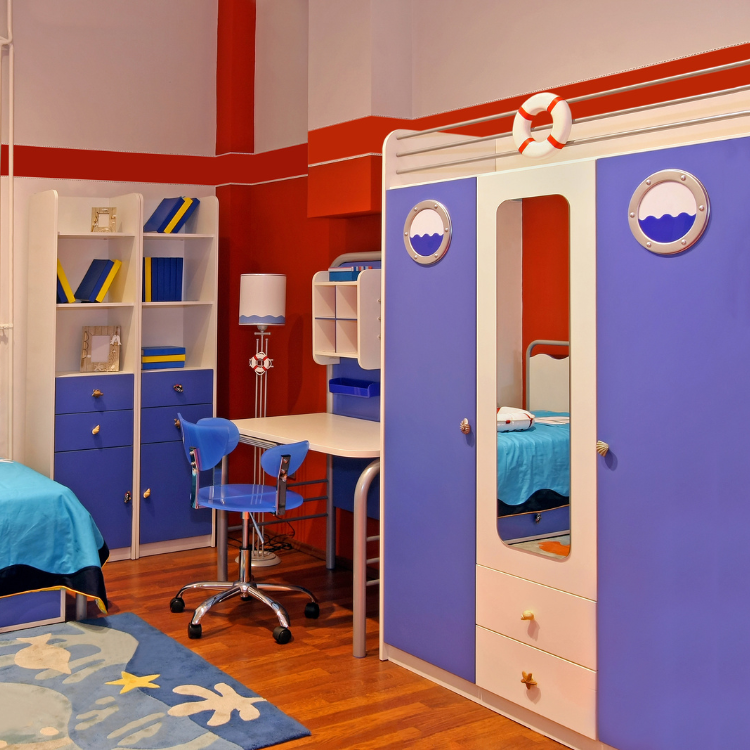
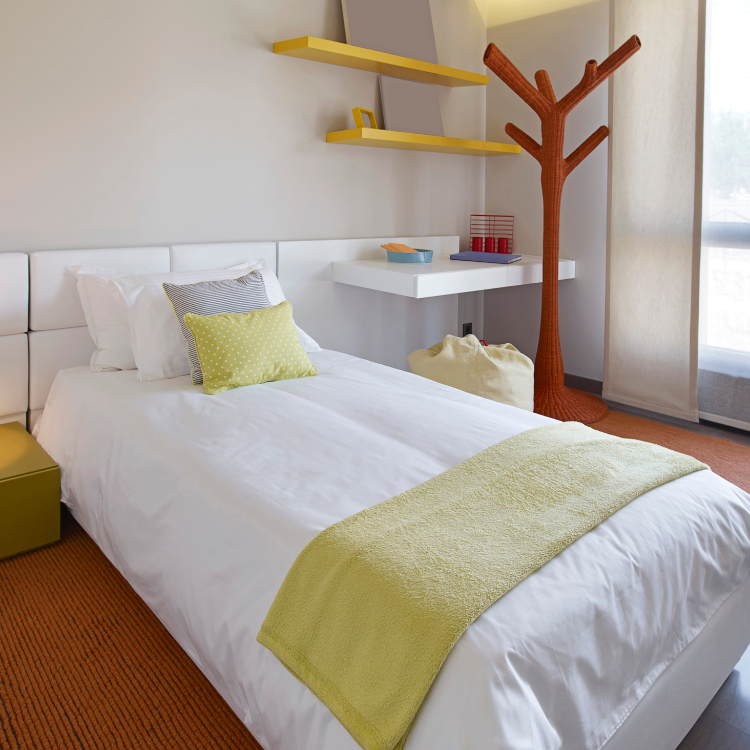
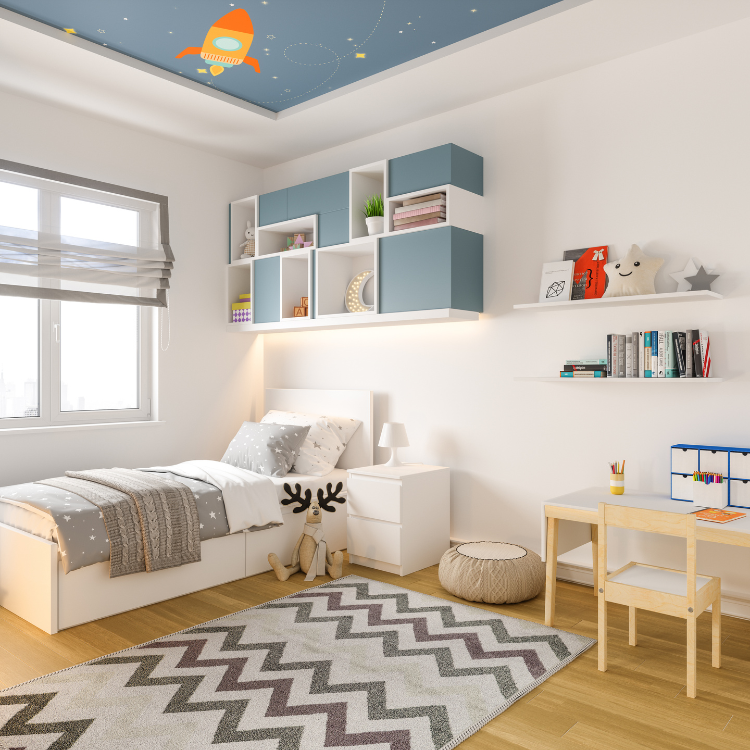
Thanks for this post. There are a few really good tips here that I will use for my sons room. He is almost-6 & we’ve been waiting to paint/decorate his room until he’s gotten over the ‘destructo’ phase of toddler-hood 😀
So, after I spackle the drywall (no holes, just ‘dings’) I’ll help him pick his paint color and bedding set! Yea, thanks for the motivation! Cheers, Annette